
Configuring vSphere HA
Learner Objectives
After completing this Configuring vSphere HA lesson, you should be able to meet the following objectives:
- Recognize the requirements for creating and using a vSphere HA cluster
- Configure a vSphere HA cluster
vSphere HA Prerequisites
To create a vSphere HA cluster, you must meet several requirements:
- All hosts must be configured with static IP addresses. If you are using DHCP, you must ensure that the address for each host persists across reboots.
- All hosts must have at least one management network in common.
- For VM monitoring to work, VMware Tools must be installed in every VM.
- Only vSphere HA clusters that contain ESXi hosts 6.x and later can be used to enable VMCP.
- You must not exceed the maximum number of hosts that are allowed in a cluster. See VMware Configuration Maximums at https://configmax.vmware.com.
Configuring vSphere HA Settings

When you create or configure a vSphere HA cluster, you must configure settings that determine how the feature works.
vSphere HA Settings: Failures and Responses
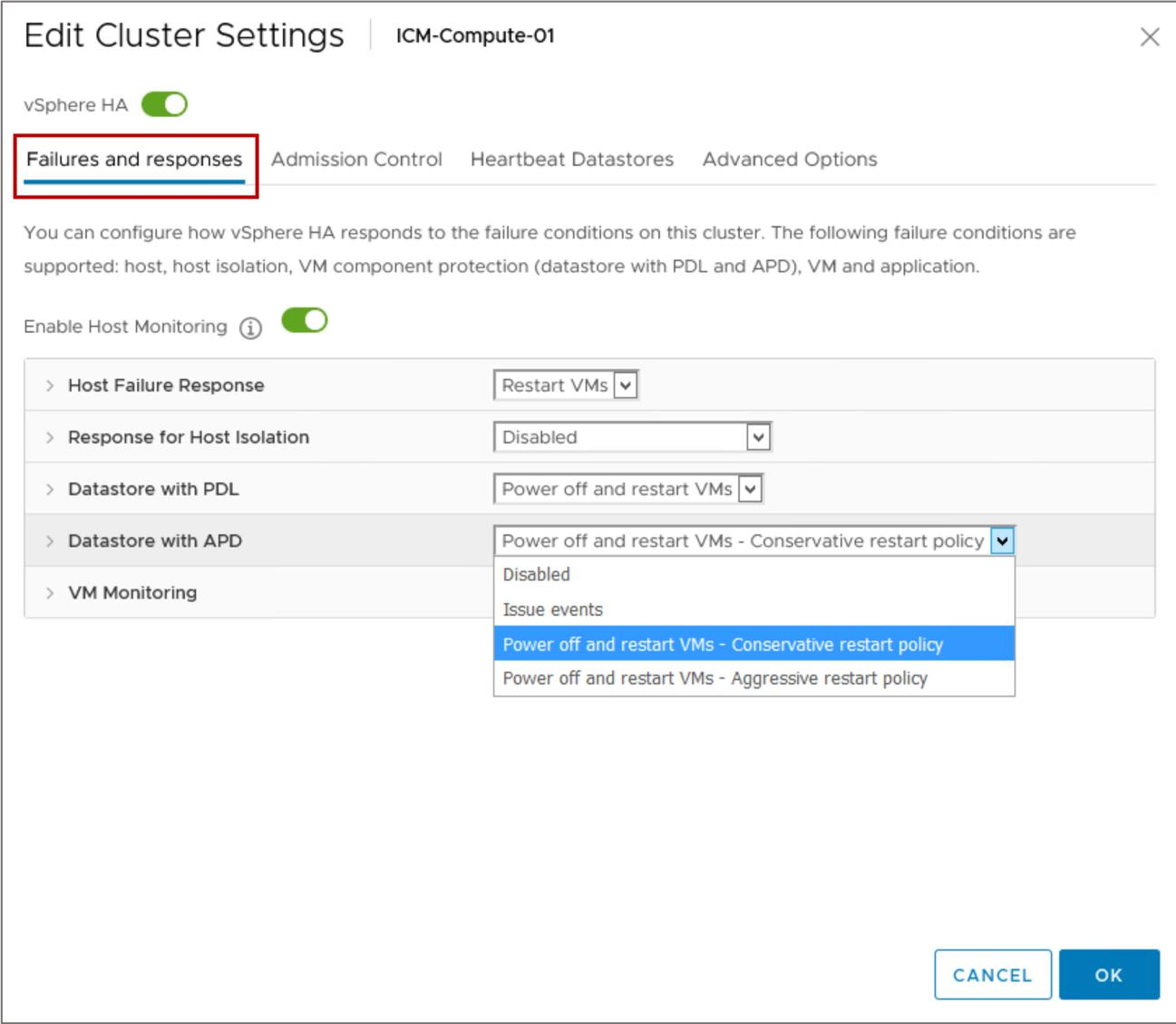
You use the Failures and responses pane to configure a cluster’s response if a failure occurs.
vSphere HA Settings: VM Monitoring
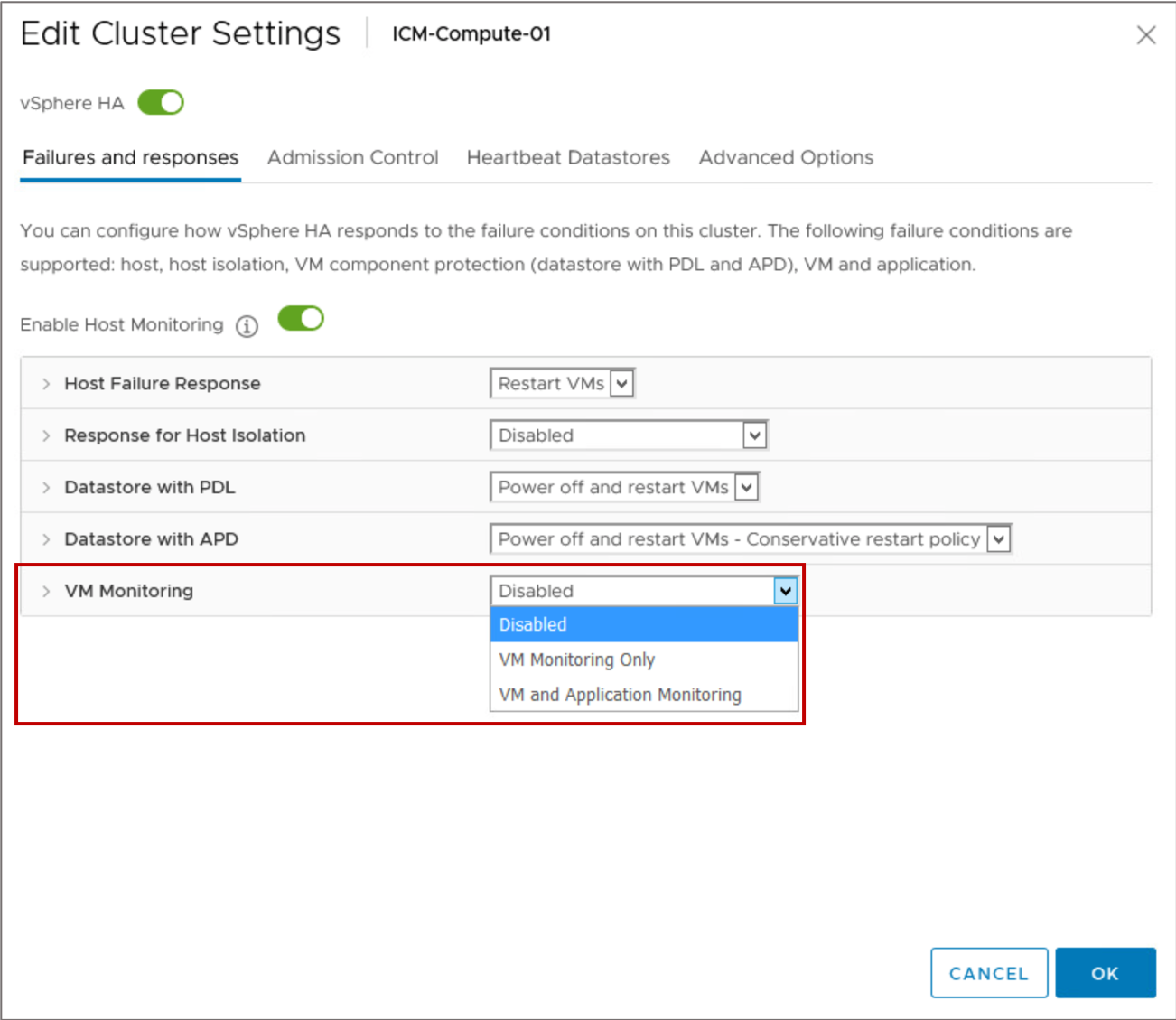
You use VM Monitoring settings to control the monitoring of VMs. By default, VM Monitoring is set to Disabled.
vSphere HA Settings: Heartbeat Datastores

A heartbeat file is created on the selected datastores and is used if the management network fails.
vSphere HA Settings: Admission Control
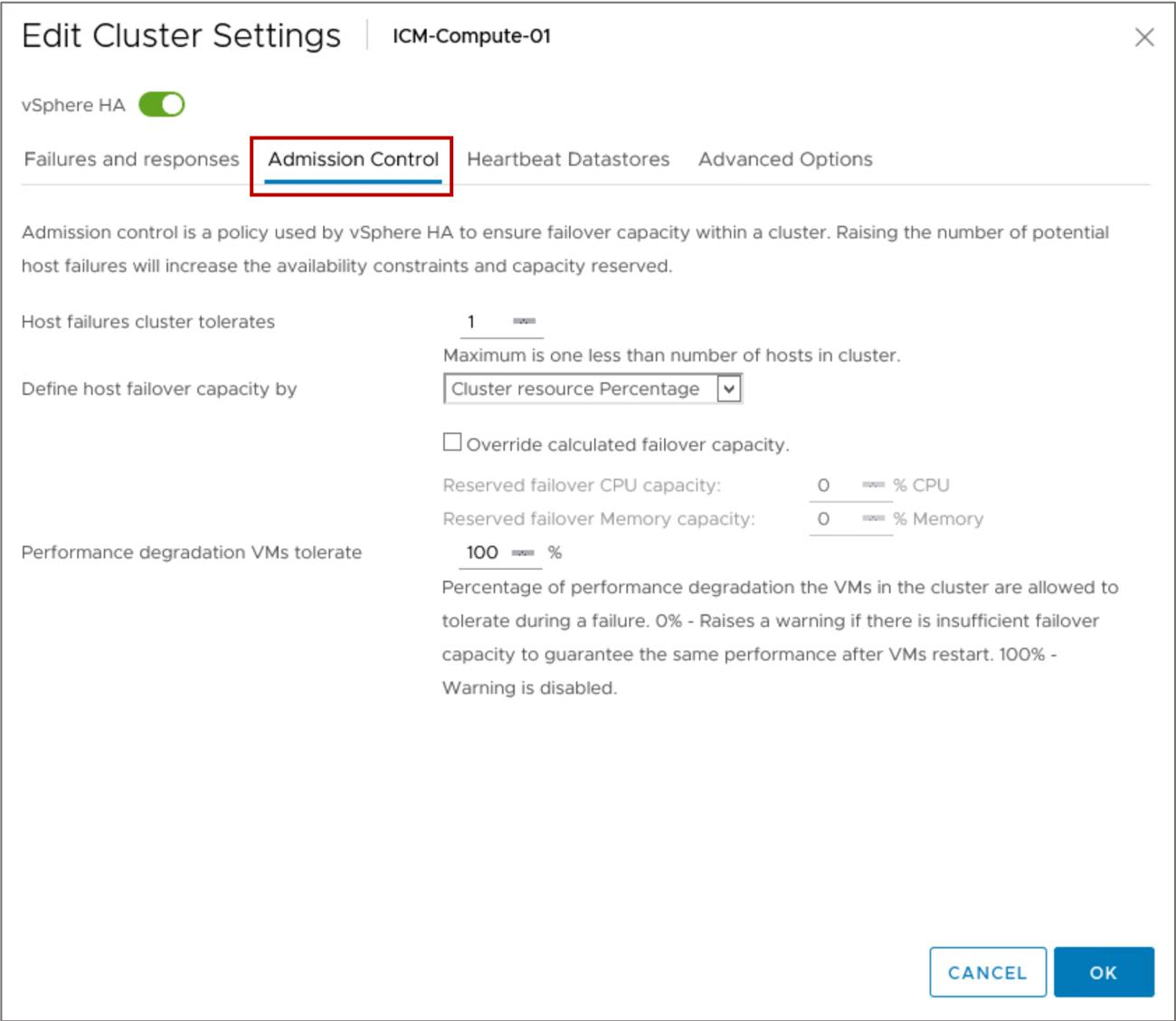
vCenter Server uses admission control to ensure both that sufficient resources are available in a cluster to provide failover protection and that VM resource reservations are respected.
Example: Admission Control Using Cluster Resources Percentage
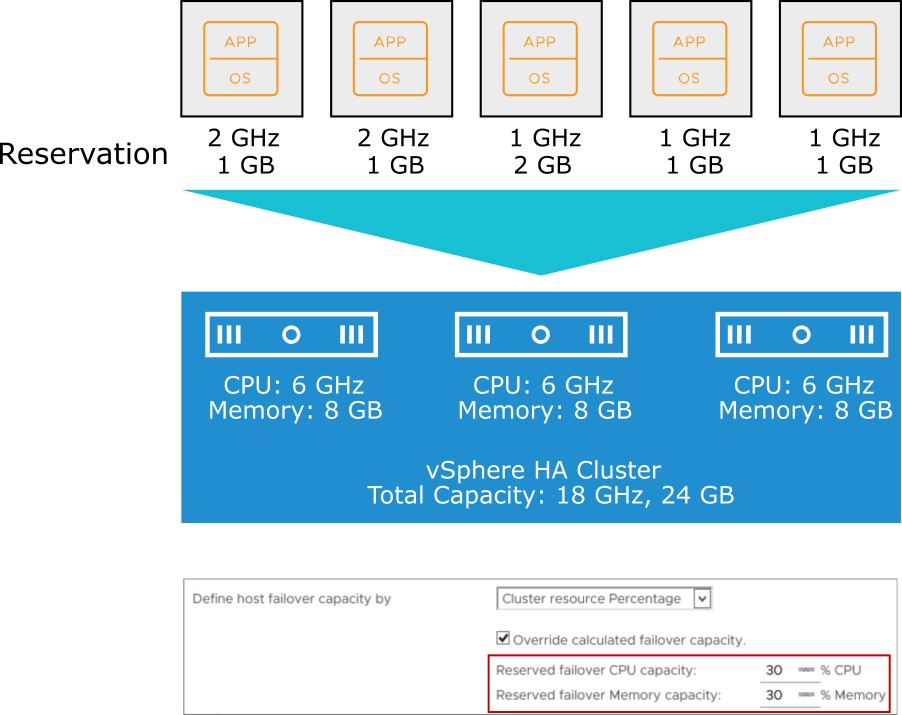 Example of calculating total failover capacity using cluster resource percentages:
Example of calculating total failover capacity using cluster resource percentages:
- Total cluster capacity:
- CPU: 18 GHz
- Memory: 24 GB
- Total VM reservations:
- CPU: 7 GHz
- Memory: 6 GB
- Current failover CPU capacity is 61%:
((18 GHz – 7 GHz)/18 GHz) = 61% • Current failover memory capacity is 75%: ((24 GB – 6 GB)/24 GB) = 75%
Example: Admission Control Using Slots (1)
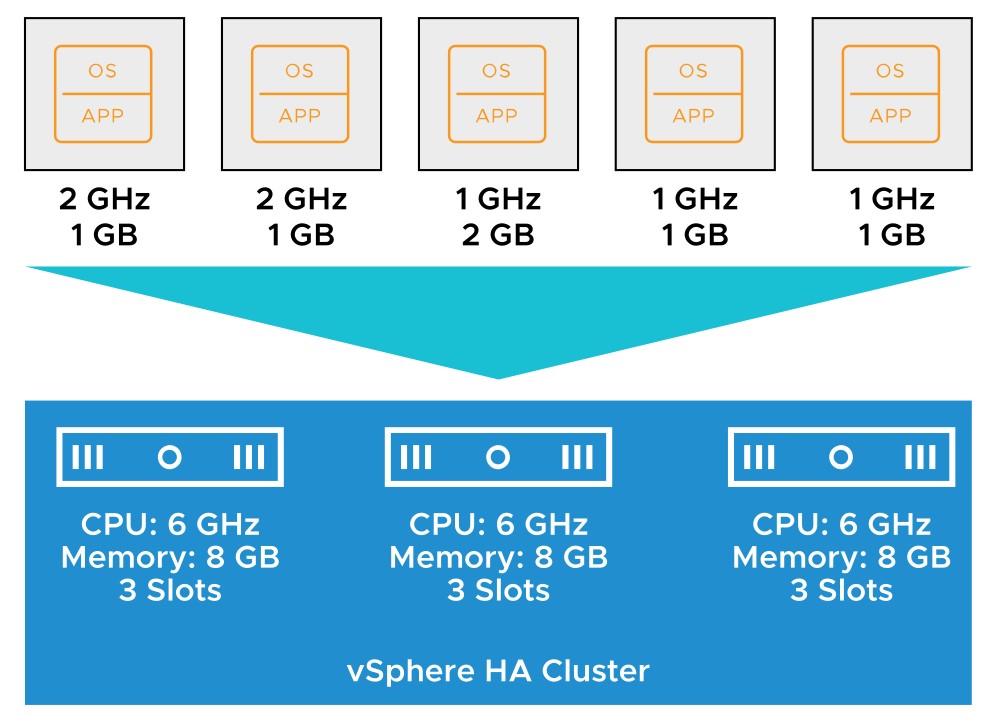 A slot is calculated by combining the largest memory reservation and the largest CPU reservation of any running VM in the cluster. vSphere HA performs admission control by calculating the following values:
A slot is calculated by combining the largest memory reservation and the largest CPU reservation of any running VM in the cluster. vSphere HA performs admission control by calculating the following values:
- Slot size:
- In this example, the slot size is 2 GHz CPU and 2 GB memory.
- Number of slots each host in the cluster can hold:
- Three
- The cluster has a total of nine slots (3 + 3 + 3).
Example: Admission Control Using Slots (2)
vSphere HA also calculates the current failover capacity. In this example, the failover capacity is one host:

If the first host fails, six slots remain in the cluster, which is sufficient for all five of the powered-on VMs.
- If the first and second hosts fail, only three slots remain, which is insufficient for all five of the VMs.
- If the current failover capacity is less than the configured failover capacity, vSphere HA does not allow any more VMs to power on.
vSphere HA Settings: Performance Degradation VMs Tolerate
The Performance degradation VMs tolerate threshold specifies the percentage of performance degradation that the VMs in the cluster are allowed to tolerate during a failure. 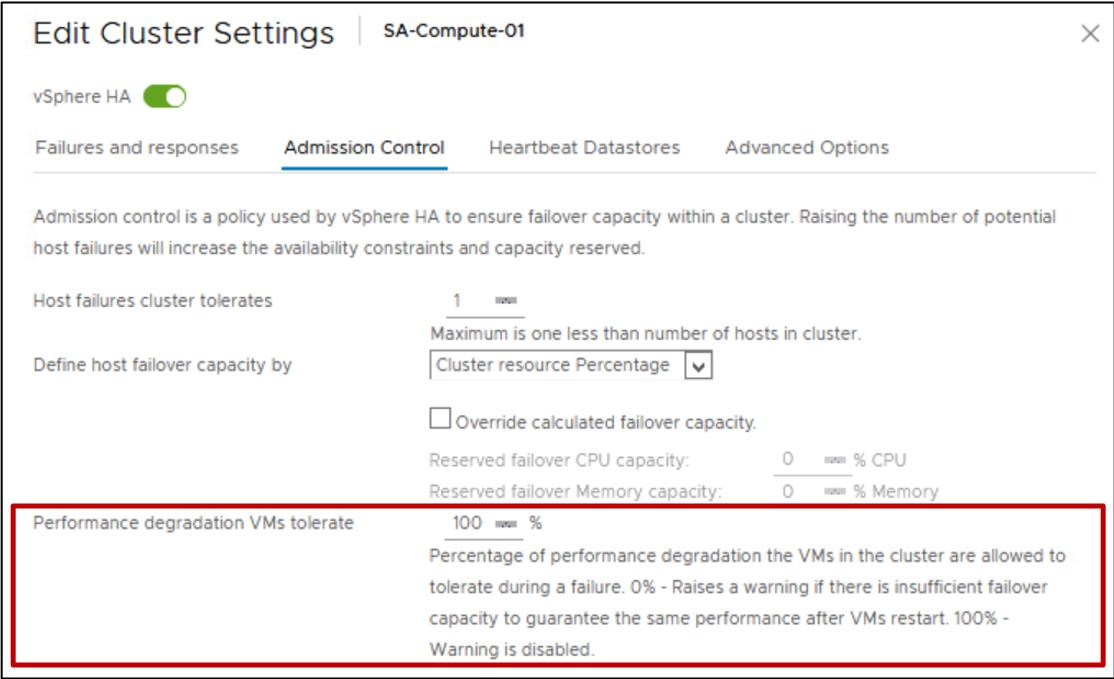
vSphere HA Setting: Default VM Restart Priority
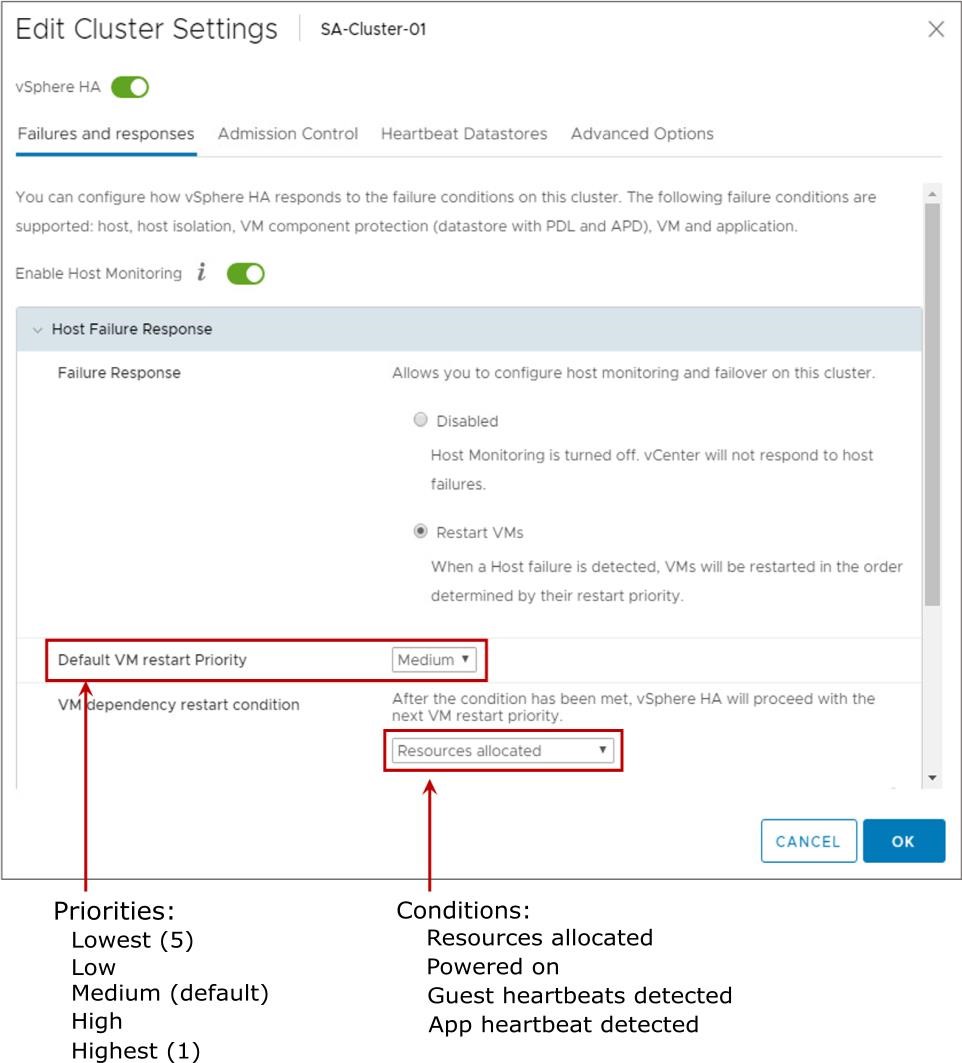
The VM restart priority determines the order in which vSphere HA restarts VMs on a running host. VMs are put in the Medium restart priority by default, unless the restart priority is explicitly set using VM overrides. Exceptions:
- Agent VMs always start first, and the restart priority is nonconfigurable.
- vSphere Fault Tolerance secondary VMs fail over before regular VMs. Primary VMs follow the normal restart priority.
vSphere HA Settings: Advanced Options
You can set advanced vSphere HA options to customize vSphere HA behavior.
| Description | Option | Value |
| Force a cluster not to use the default isolation address (default gateway). | das.usedefaultisolationaddress | false |
| Force a cluster to ping alternate isolation addresses. | das.isolationaddressX | IP address or FQDN |
| Force a cluster to wait beyond the default 30-second isolation action window. | fdm.isolationpolicydelaysec | >=30 seconds |
| Force maximum bound on the memory slot size. | das.slotmeminmb | 100 |
| Force maximum bound on the CPU slot size. | das.slotcpuinmhz | 32 |
vSphere HA Settings: VM-Level Settings
You can customize the restart priority for individual VMs in a cluster to override the default level set for the entire cluster. 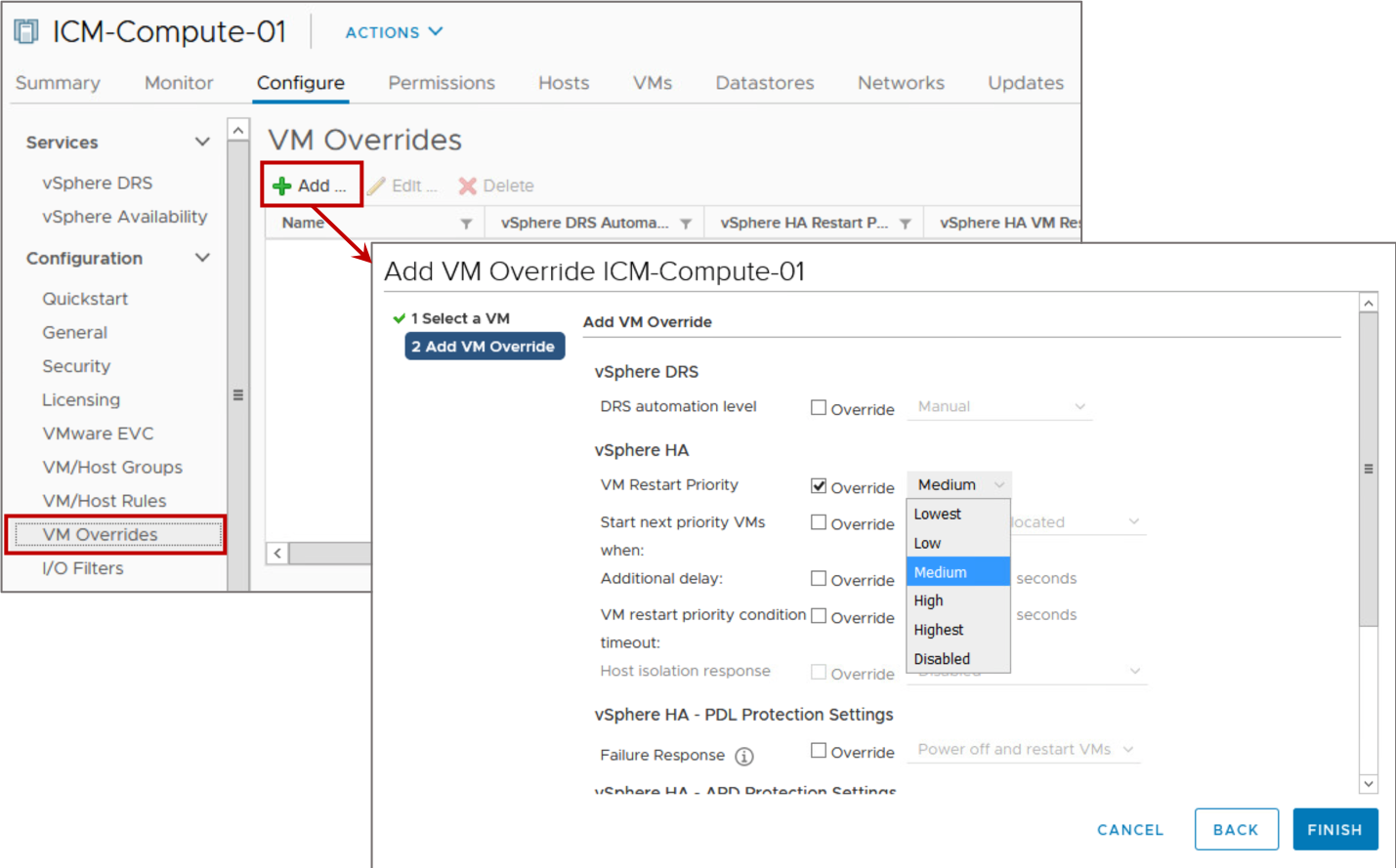
About vSphere HA Orchestrated Restart
Orchestrated restart in vSphere HA enables five tiers for restarting VM and VM-VM dependencies. Choose from among the following conditions that must be met before a VM is considered ready:
- VM has resources secured.
- VM is powered on.
- VMware Tools heartbeat is detected.
- VMware Tools application heartbeat is detected.
VMs can be grouped into tiers indicating their startup priority:
- All VMs in the priority 1 tier receive their resources first and are powered on.
- After all the VMs in tier 1 have met their defined restart condition, vSphere HA continues to the VMs in the priority 2 tier, and so on.
VM Dependencies in Orchestrated Restart (1)
VMs can depend only on other VMs of the same or higher priority. Only direct dependencies are supported. VM-to-VM dependency is a hard rule. Creating cyclical dependencies causes VM restart to fail. 
VM Dependencies in Orchestrated Restart (2)
In vSphere 6.5 and later, vSphere HA restarts VMs only from a failed host. Configure affinity rules to keep VMs on the same host if necessary. 
Network Configuration and Maintenance
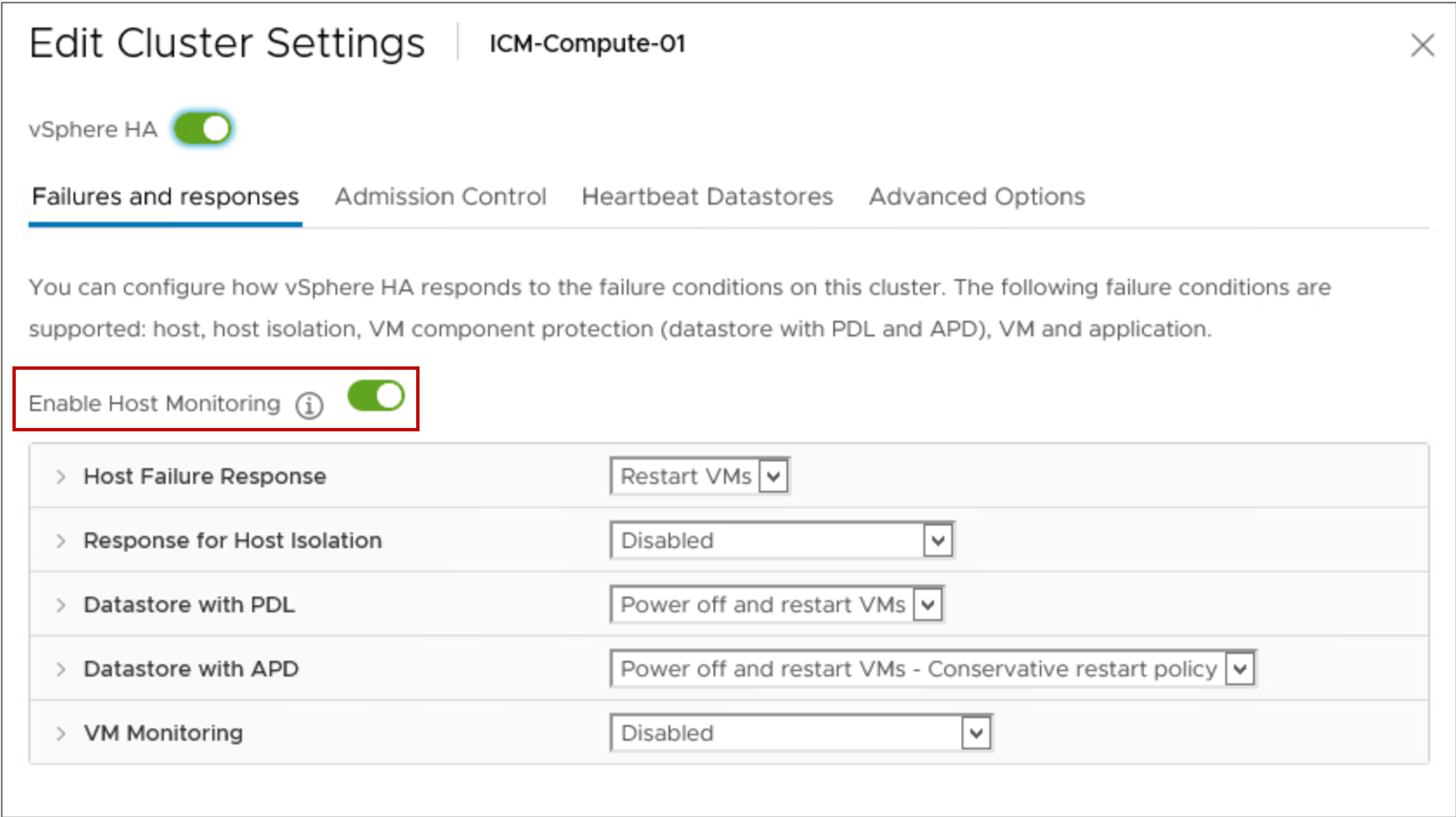
Disable host monitoring before modifying virtual networking components that involve the VMkernel ports configured for management or vSAN traffic. This practice prevents unwanted attempts to fail over VMs.
Monitoring vSphere HA Cluster Status
You can monitor the status of a vSphere HA cluster on the Summary page of the Monitor tab. 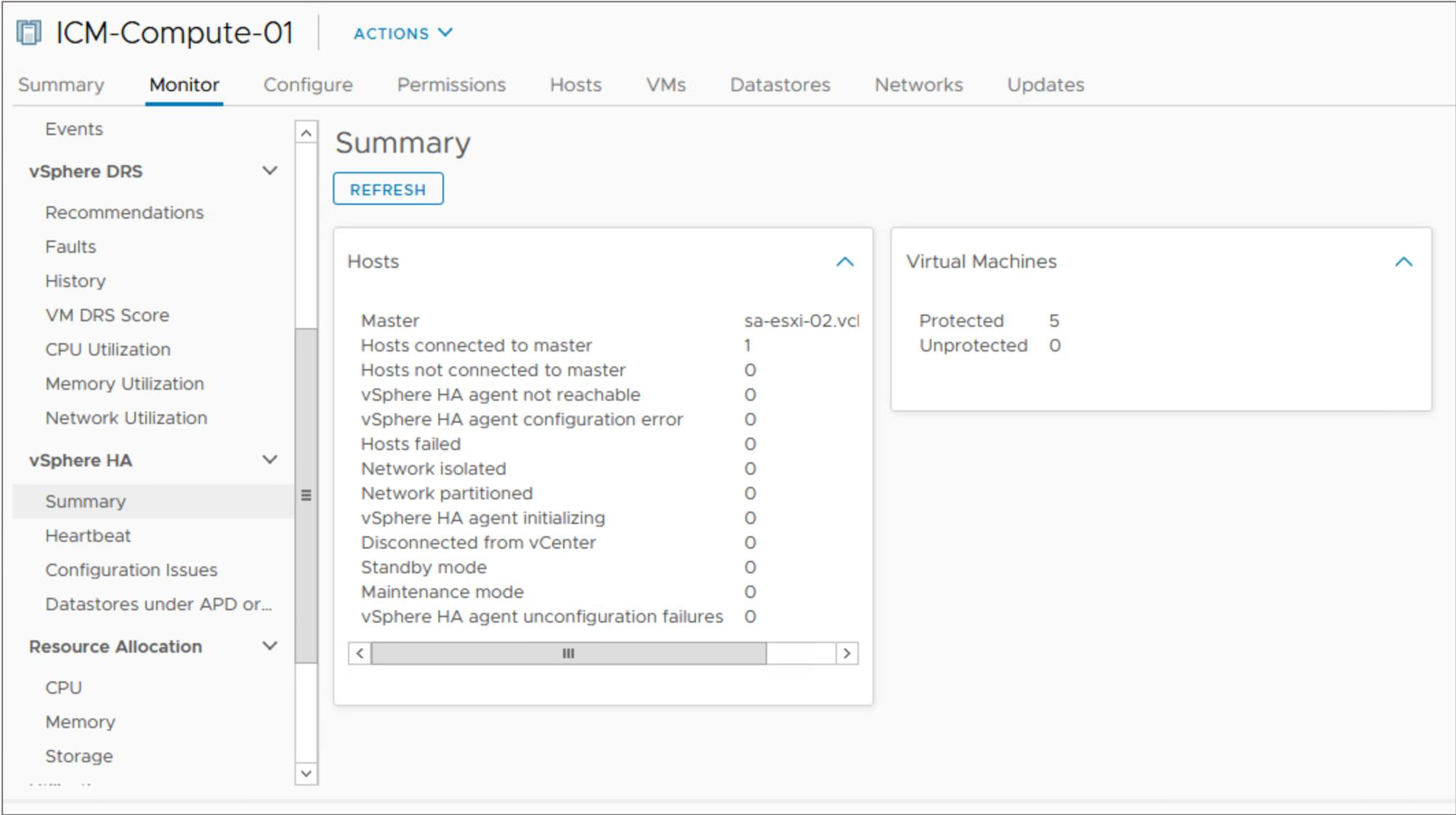
Using vSphere HA with vSphere DRS
vSphere HA is closely integrated with vSphere DRS:
- When a failover occurs, vSphere HA checks whether resources are available on that host for the failover.
- If resources are not available, vSphere HA asks vSphere DRS to accommodate for the VMs where possible.
vSphere HA might not be able to fail over VMs for the following reasons:
- vSphere HA admission control is disabled, and resources are insufficient in the remaining hosts to power on all the failed VMs.
- Sufficient aggregated resources exist, but they are fragmented across hosts. In such cases, vSphere HA uses vSphere DRS to try to adjust the cluster by migrating VMs to defragment the resources.
Review of Learner Objectives
After completing this Configuring vSphere HA lesson, you should be able to meet the following objectives:
- Recognize the requirements for creating and using a vSphere HA cluster
- Configure a vSphere HA cluster